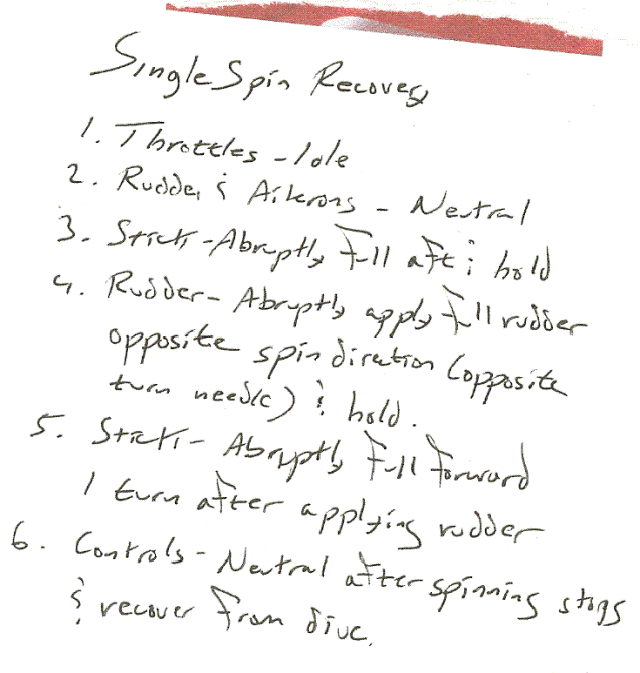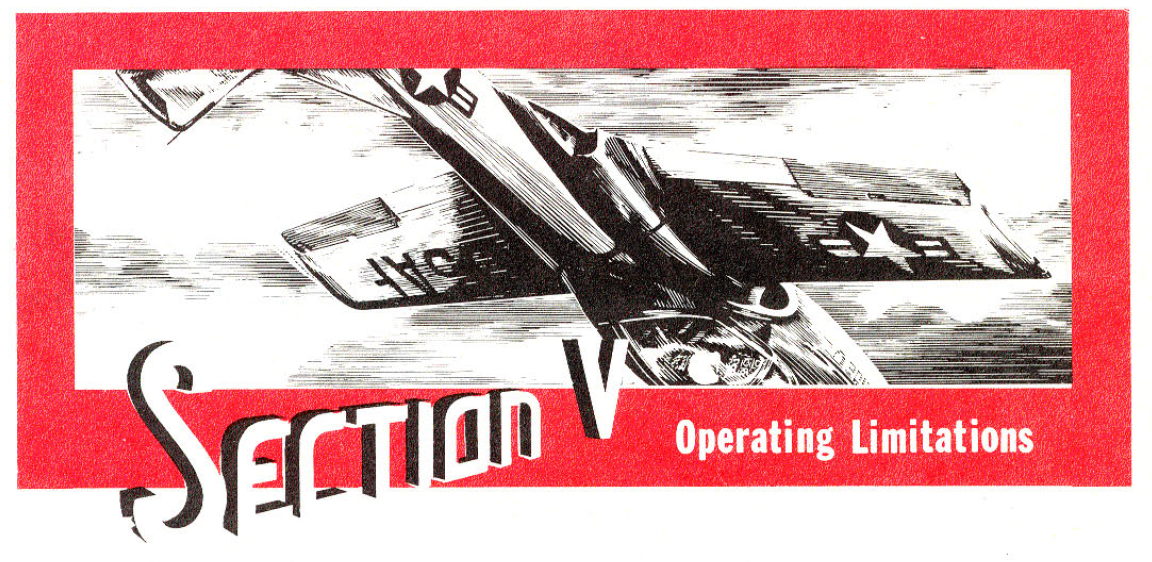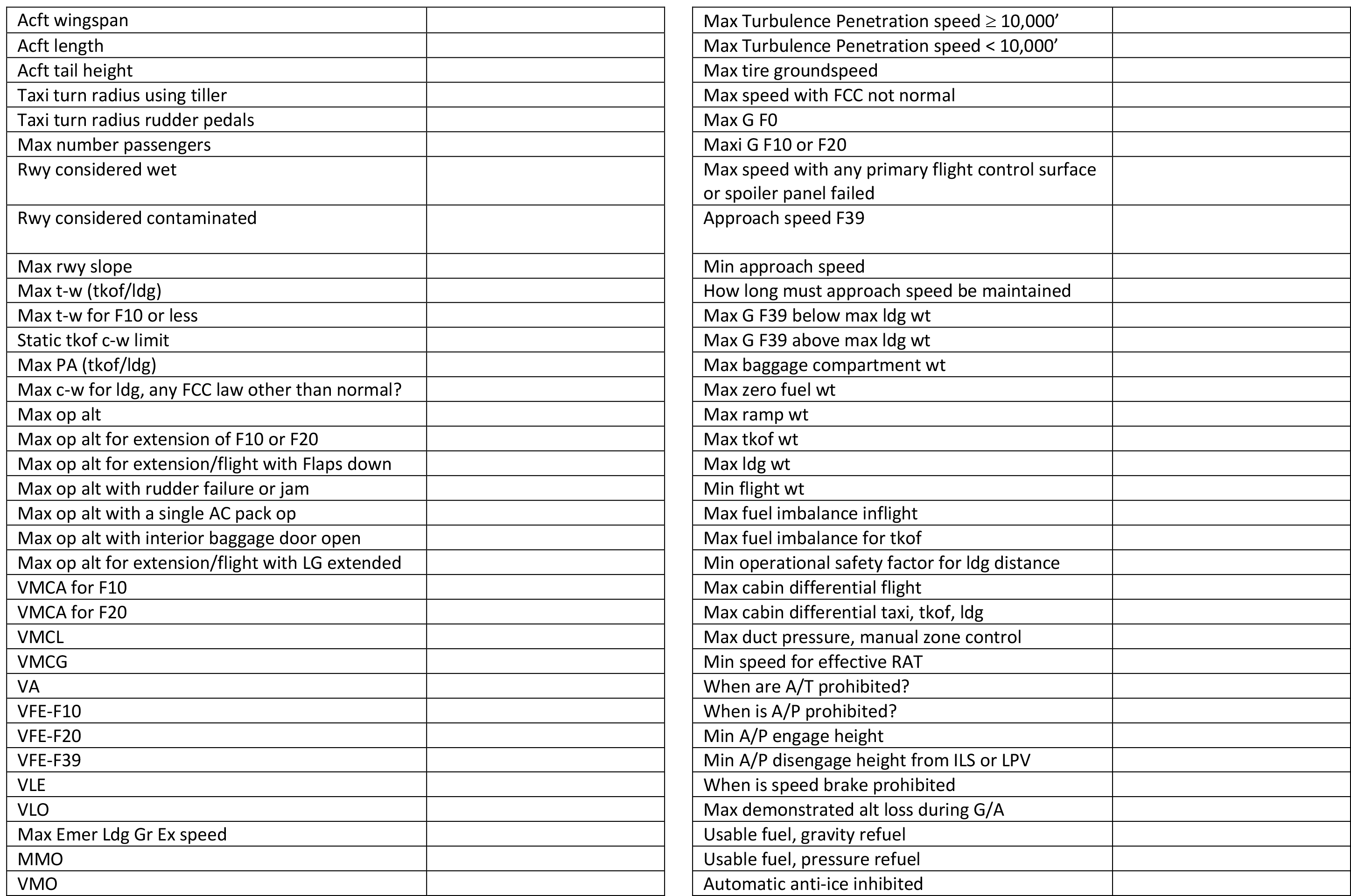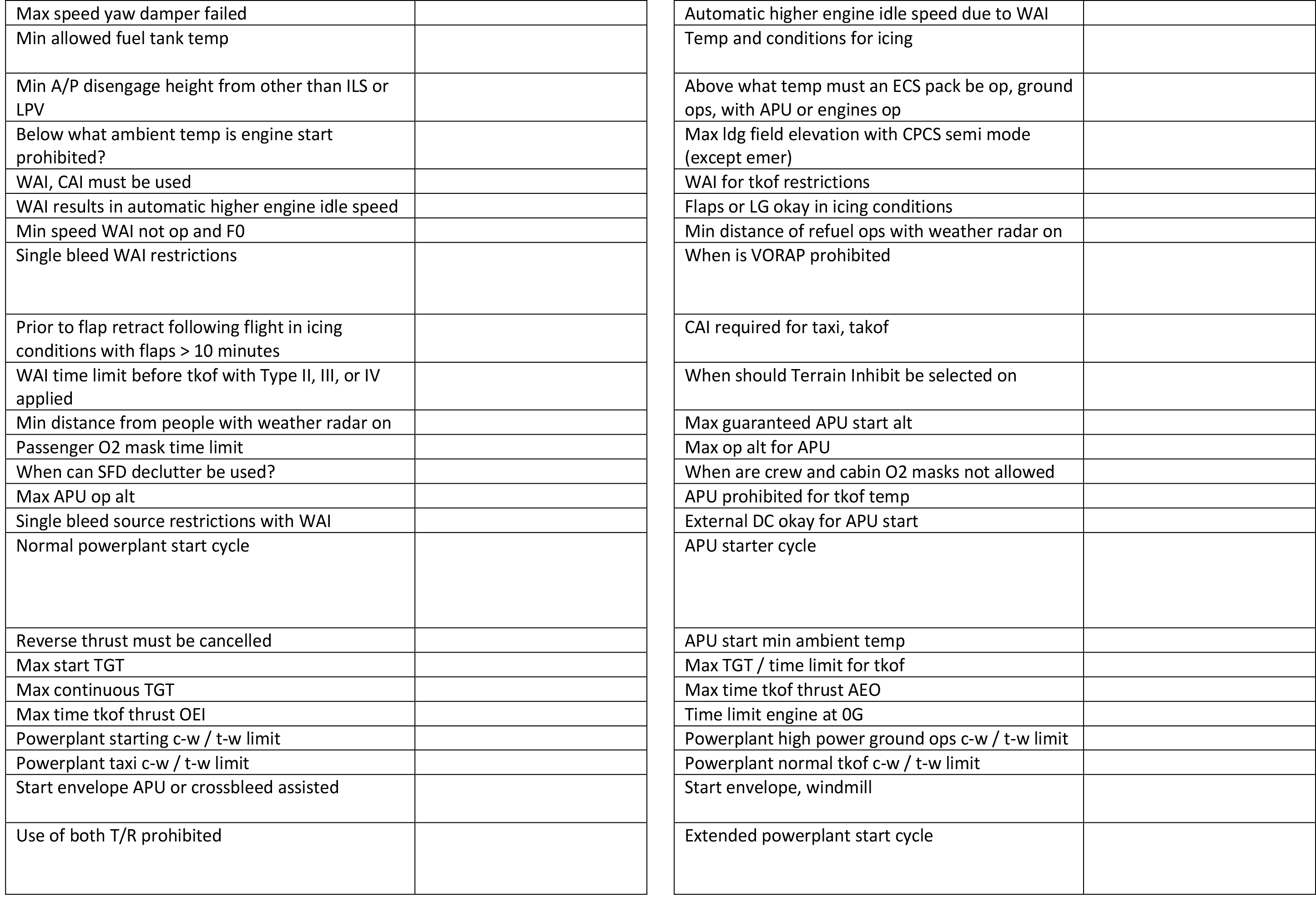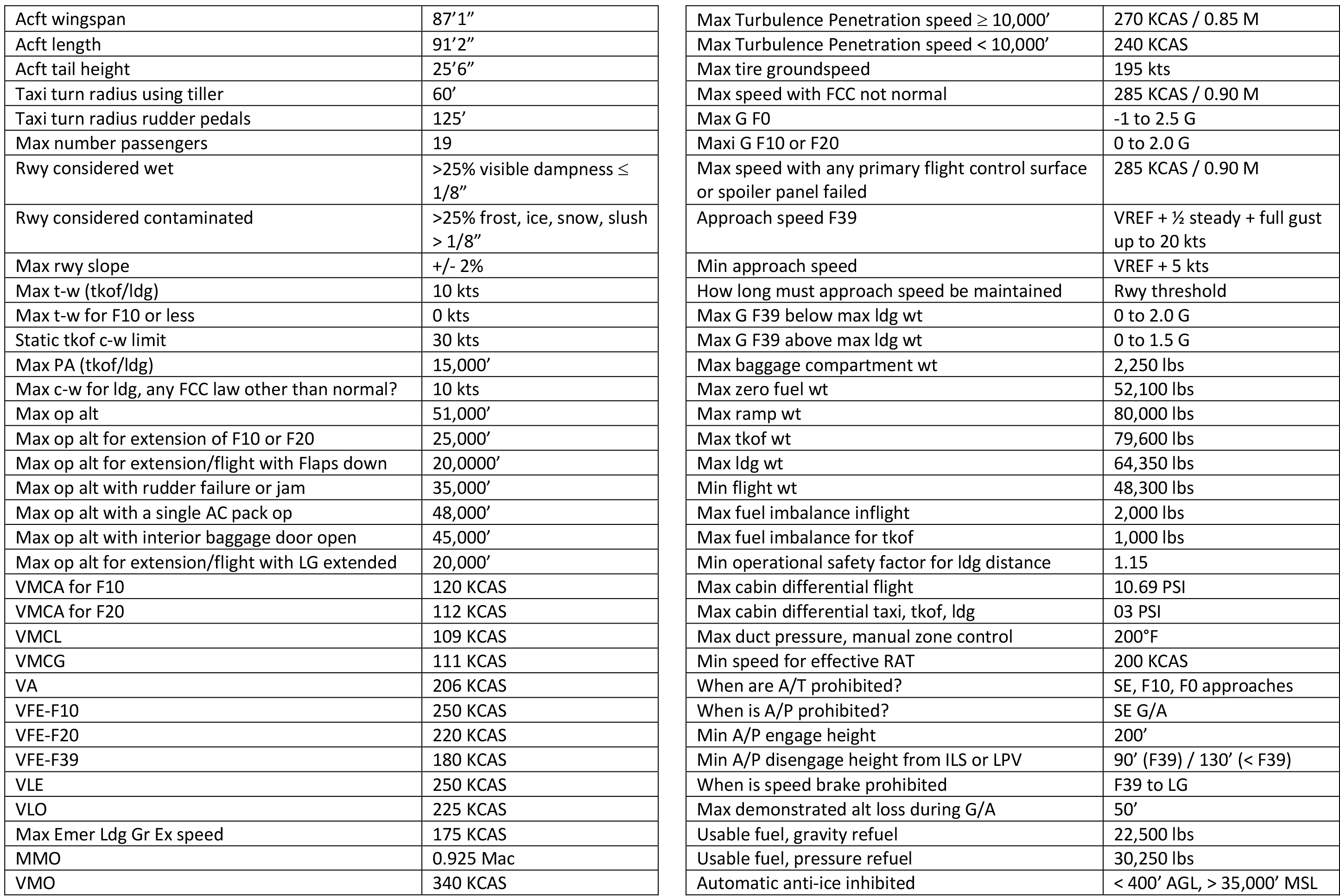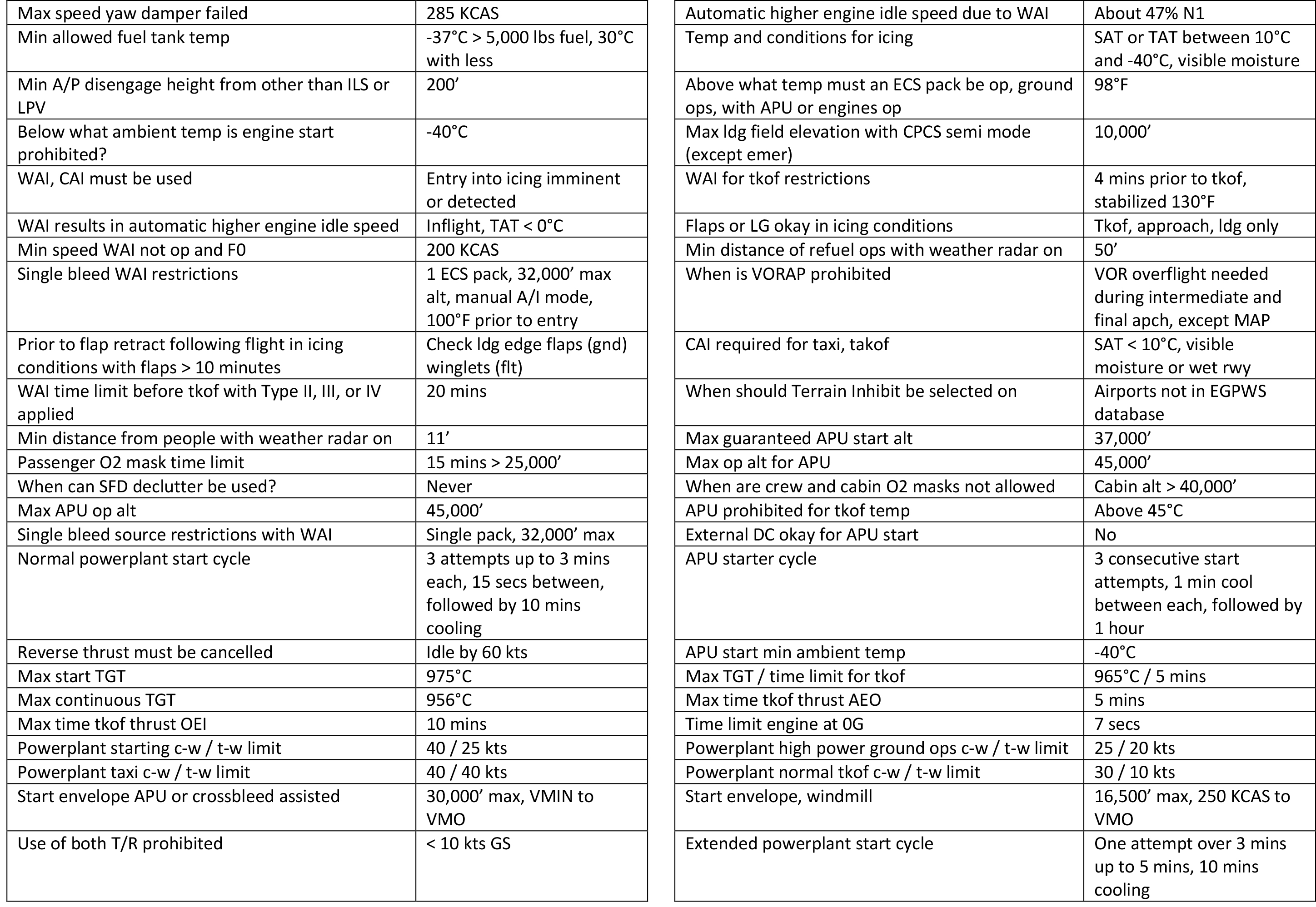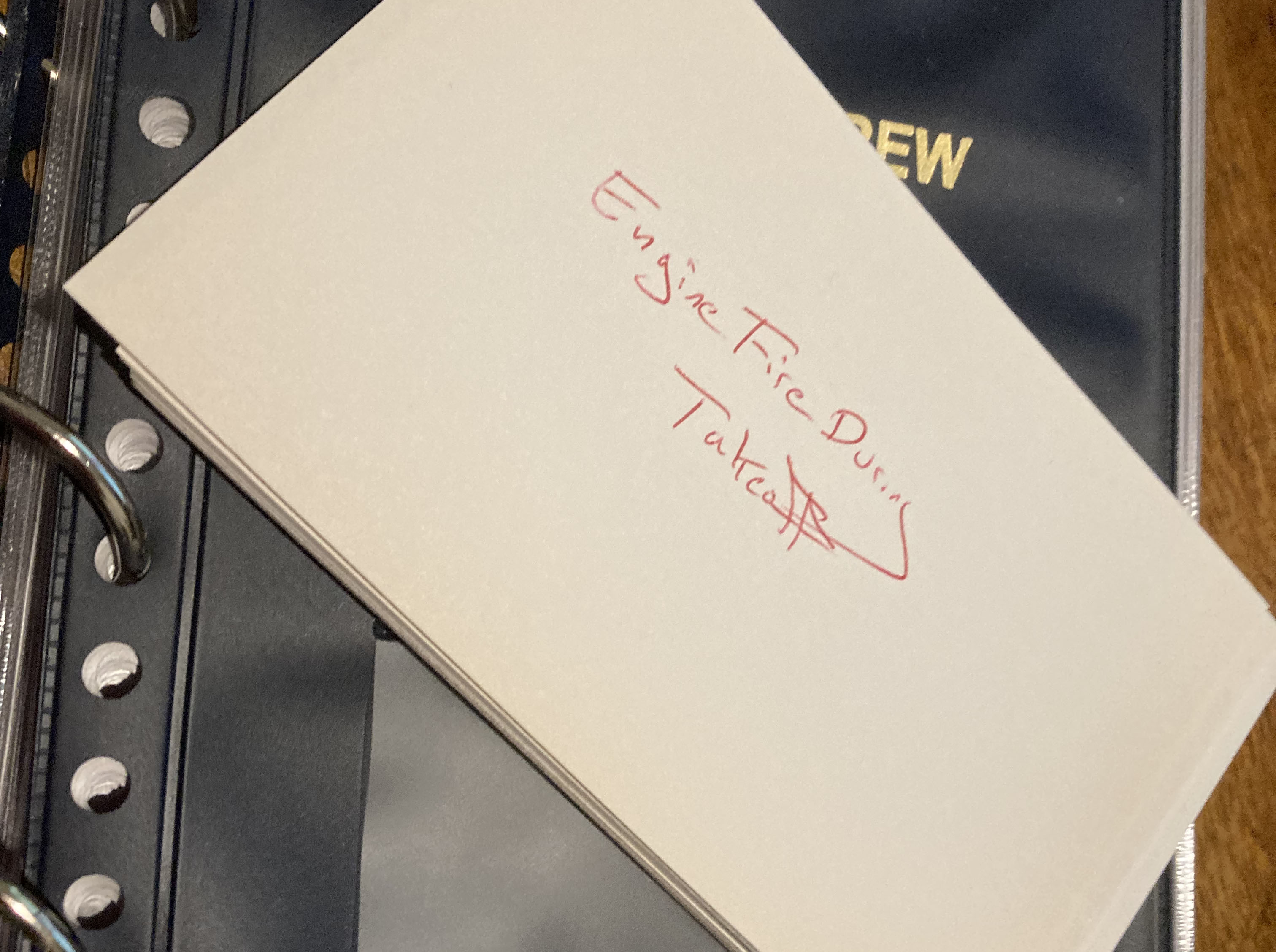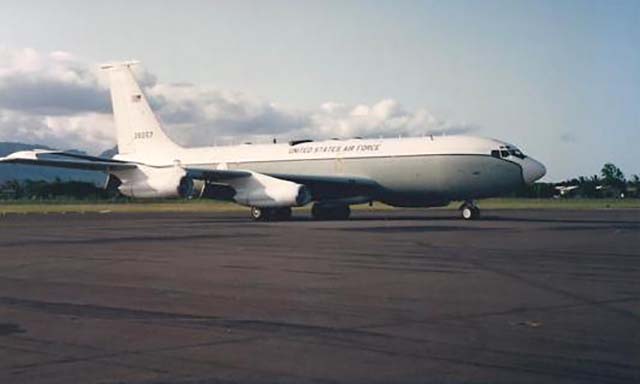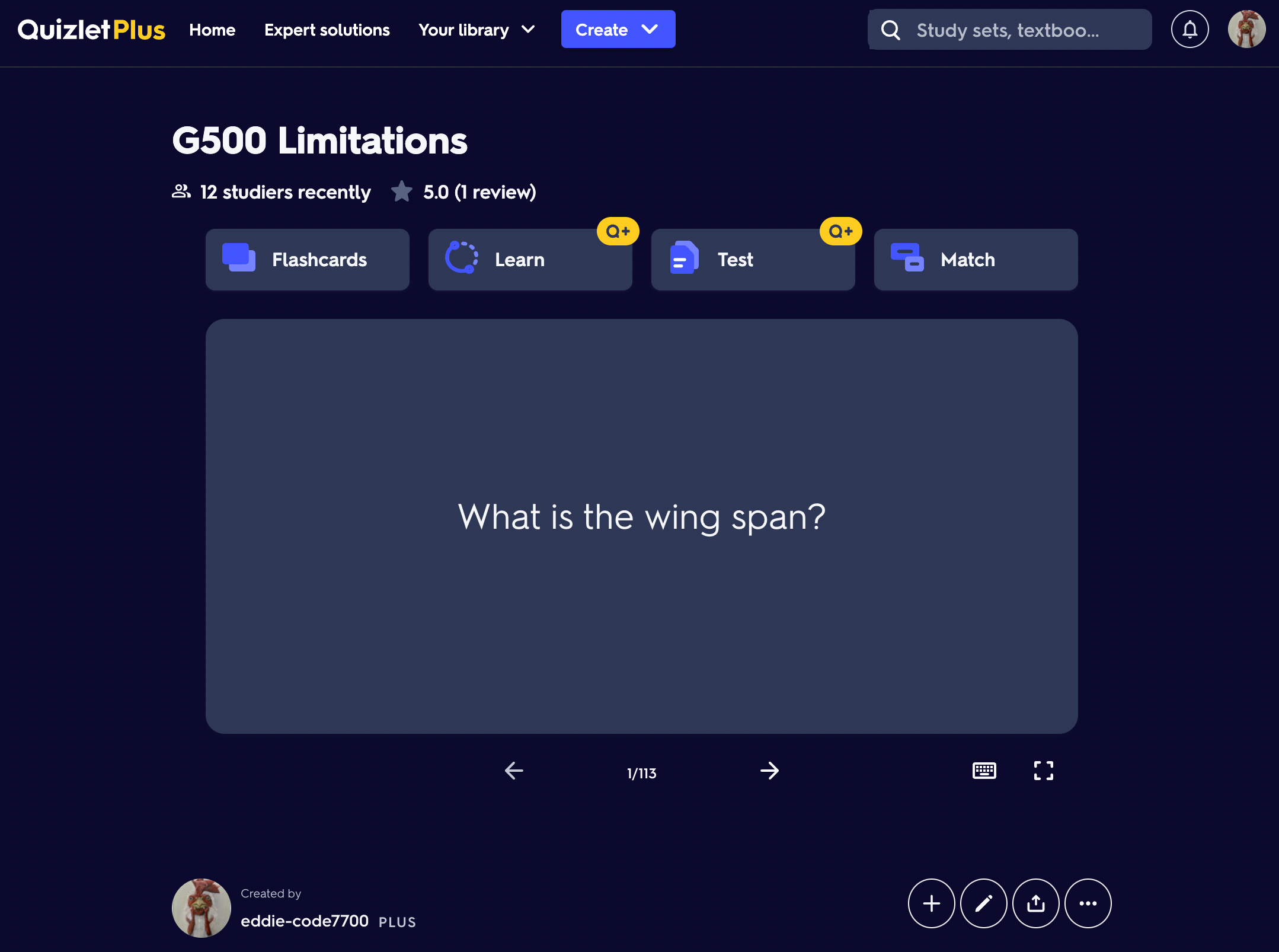How's your memory? Most of us answer that with "not good" and most of us believe that. But I've been part of an experiment of sorts that convinces me anyone can memorize long lists of things if they put their mind to it. You just have to know what works for you. Based on that experiment and the experiences that followed, I can offer more than a few techniques.
— James Albright

Updated:
2022-12-15
So what was that experiment? In 1979, I was one of 77 students in U.S. Air Force Undergraduate Pilot Training (UPT) Class 80-02. It was almost a year of written exams, oral tests, and monthly aircraft checkrides. All of it required we memorize long lists of aircraft limitations and procedures. Today the Air Force calls what I went through as "UPT 1.0" because our methods were invented with the birth of the Air Force in 1947 and have only recently (around the year 2000) been changed. But the methods we used to memorize have long proven effective:
Not too many years after UPT, I was in a squadron where having an engine failure, cabin fire, or rapid depressurization were not uncommon and the need to have memory items memorized became more than just an academic exercise. Fortunately, somebody instituted a memorization method that worked:
Back in 1979, a computer meant something very large that required its own building and specialists to input that data, to write the programs, and to interpret the output. Now we all have much more capability in our cars and our phones. So we can used those tools to help us memorize:

1
Quick, write, quick!
T-37 Single Spin Recovery
1979 . . .
If you have to memorize a long procedure word-for-word with no margin for error, the surest way to cement the words themselves into your memory is by using the brain-to-hand interface.
I heard this described this way during our first day in class at UPT. The instructor first described the jarring sensation of having the world spin around you while the view out the front of the airplane alternates between the ground and sky. Your inner ear screams at you to do one thing while your eyes want you to do something else. All the while your brain is in panic mode. "You have to have the single spin recovery procedure memorized!" he demanded. "Every word and every bit of punctuation, in the correct order. Getting them wrong can kill you! So how you going to do that?"
The procedure was 6 steps long, composed of 39 words not counting two ampersands ("&") but counting one numeral, the number "1."
"You may think you can read the procedure over and over and eventually you will get it," the instructor continued. "Maybe you will. But you will not fly until you have it perfectly. So you might as well memorize it the right way the first time."
He explained that the act of writing activates a connection between your hands and your brain; cementing what is written into your brain. He said the key was to write quickly, even if the result is illegible. "It doesn't matter that you can't read it, because you are going to throw it away. You do this twenty times tonight, you will have this memorized tomorrow!"
That night I wrote it down twenty times. The next morning in class, as soon as our instructor entered, he yelled, "The single spin recovery: quick, write, quick," as if issuing marching orders. "Hurry! Place your pencils down when you are done and I'll check your work."
He walked behind each of us at our desks, saying only, "Dead man!" When he got to me, he read my scribble and asked, "How many times did you do this yesterday?"
"Twenty times, sir," I said.
"You got steps three and four in the wrong order. You know what that makes you, lieutenant?"
My first thought was "close" but I gave the expected answer. "A dead man."
"That you are."
Of forty students, only one managed to live that day. I joined him the next day. The method clearly worked.
More about this: Single Spin Recovery.
2020 . . .
This method has served me well for aircraft with memory items that required the word-for-word mentality, but I left all of those behind in the Air Force. So I haven't had to use this method in a very long time.
2
The long form!
T-37 limitations meet the GVII
1979 . . .
We were also issued our very first flight manual on our first day at UPT. It was, in military terms, called the "Technical Order 1T-37B-1" but simply called the "dash one." Our memorization instructor asked us to turn to page 5-1 and told us every dash one in our Air Force futures would have a section five and we would have to memorize every number in this section. So get started! He handed us a type written page with 65 empty blanks and said it was up to us to look up the answers and fill them in. He then pointed to a box in the front of class with hundreds of these pages to practice with. "Do this twenty times and you will have them memorized!"
The page was filled with empty blanks awaiting answers we didn't know. I turned to Section 5 and filled in the first blank:
Max Continuous: ____ % rpm, ____ °C
The answers were 95% and 650°C. Two down and 63 go to.
"Don't do this now, we have other work to do. It is up to you to memorize all this on your free time."
It took all of my free time that day just to look up and fill out the form the first time. Like my classmates, I didn't see how my brain was going to do this. But within a week, after about twenty repetitions, I had them memorized.
2020 . . .
This technique has translated well to every aircraft I've flown since, including the Gulfstream GVII. Here are my blank limitations sheets (pages 1 and 2):
Download: G500 Limitations (blank)
Here are the same sheets with the answers. You can cut out the columns with answers or fold along the vertical lines to make comparison with your hand written answers easier.
Download: G500 Limitations (with answers)
3
Stand up!
T-37 procedures meet the GVII
1979 . . .
In UPT we had a ritual called "stand up" because it required you to stand up in front of your peers and instructors to place you under a degree of stress. And then, with everyone watching, you would be asked a question which required you to think and pull out the right answer.
Instructor: (surveying the room and settling on his prey) "Lieutenant Jones.""
Lieutenant Jones stands at attention, eyes forward, listening.
Instructor: "You are in the overhead traffic pattern having just extended your landing gear and about to turn when you hit a flock of birds and both engines quit. What will you do?"
Jones: "Sir, I would scan the engine instruments."
Instructor: "They are both seized at zero percent."
Jones: "Hands grip raise, triggers squeezed." (Which means he would eject.)
Instructor: "What is your minimum ejection altitude?"
Jones: "500 feet, sir, since I will have the zero delay lanyard installed."
And so it goes. It was an effective way of testing that memorized knowledge can be retrieved under stress.
2020 . . .
This kind of potential humiliation is shunned upon in the civilian world. In fact, it is rarely used in the military these days. In its place we have oral exams where an instructor quizzes a student in private or sometimes in a classroom setting with a more relaxed atmosphere. Instructors risk post-course critiques if they are too brutal, so many resort to open questions offered to the class as a whole. Volunteers can offer their answers and the unknowing are permitted to remain unknowing quietly.
I think the oral cross examination is very effective in discovering holes in knowledge and believe trading questions and answers with peers is well worth the time.
4
In a flash!
T-37 limitations meet the GVII
1979 . . .
The tried and true solution to memorizing a lot of things is to write a stack of flash cards and review them over and over again. Shuffling the cards increased the challenge and the fact they were small enough to put in your pocket meant you could carry them around with you to make use of any spare time. I think I've had a stack of flash cards for every aircraft I've been checked out in. Over the years, some training vendors would actually make the cards for you.
2020 . . .
I've been doing this for years and it has almost become automatic: pull out the limitations section of the Airplane Flight Manual (AFM) and stack of 3" x 5" index cards, and start writing. The problem these days is the limitation section has become extraordinarily long. The GVII-G500 limitations section, for example, is 90 pages long. So you end up relying on the training vendor and some intuition on what is expected of you. Here is what I came away with during initial:
Note: This was in 2019; some of these may have changed.
- Q. What are the maximum number of passengers?
A. 19.
Ref: [AFM, §01-01-20] - Q. When is a runway considered wet?
A. More than 25% of the reported length and width used covered by any visible dampness that is 1/8" or less in depth.
Ref: [AFM, §01-02-10] - Q. When is a runway considered contaminated?
A. More than 25% of the reported length and width used covered by any frost, ice, snow, slush that is greater than 1/8" in depth.
Ref: [AFM, §01-02-10] - Q. What is the maximum runway slope for takeoff and landing?
A. +/- 2%.
Ref: [AFM, §01-02-10] - Q. What is the maximum tailwind for takeoff or landing?
A. 10 knots.
Ref: [AFM, §01-02-10] - Q. What is the maximum crosswind component for landing when operating in any flight control law other than normal?
A. 10 knots.
Ref: [AFM, §01-02-10] - Q. What is the maximum tailwind component for landing with flaps 10° or less?
A. 0 knots.
Ref: [AFM, §01-02-10] - Q. What is the takeoff crosswind limit?
A. 30 knots.
Ref: [AFM, §01-02-10] - Q. What is the maximum approved airport pressure altitude for takeoff or landing?
A. 15,000 feet.
Ref: [AFM, §01-02-20] - Q. Below what ambient temperature is engine start prohibited?
A. -20°C.
Ref: [AFM, §01-03-20] - Q. What is the maximum operating altitude?
A. 51,000 feet.
Ref: [AFM, §01-03-30] - Q. What is the maximum operating altitude with a single air conditioning pack operating?
A. 48,000 feet.
Ref: [AFM, §01-03-30] - Q. What is the maximum operating altitude with the interior baggage compartment door open?
A. 40,000 feet.
Ref: [AFM, §01-03-30] - Q. What is the maximum operating altitude with a jammed rudder, rudder failure, or yaw damper failure?
A. 35,000 feet.
Ref: [AFM, §01-03-30] - Q. What is the maximum operating altitude for extension or flight with flaps 10 or 20°?
A. 25,000 feet.
Ref: [AFM, §01-03-30] - Q. What is the maximum operating altitude for extension/flight with the landing gear extended?
A. 20,000 feet.
Ref: [AFM, §01-03-30] - Q. What is the maximum operating altitude for extension/flight with flaps 39°?
A. 20,000 feet.
Ref: [AFM, §01-03-30] - Q. What is the Minimum Control Speed Air (VMCA) for flaps 10° and flaps 20°?
A. 120 KCAS (flaps 10°), 112 KCAS (flaps 20°).
Ref: [AFM, §01-03-40] - Q. What is Minimum Control Speed Air Landing (VMCL)?
A. 109 KCAS.
Ref: [AFM, §01-03-40] - Q. What is Minimum Control Speed Ground (VMCG)?
A. 111 KCAS.
Ref: [AFM, §01-03-40] - Q. What is Maneuvering Speed (VA)?
A. 206 KCAS.
Ref: [AFM, §01-03-40] - Q. What are the maximum flaps extended speeds (VFE)?
A. 250 KCAS (flaps 10°), 220 KCAS (flaps 20°), and 180 KCAS (flaps 39°).
Ref: [AFM, §01-03-40] - Q. What is the Maximum Landing Gear Extended speed (VLE)?
A. 250 KCAS.
Ref: [AFM, §01-03-40] - Q. What is the Maximum Landing Gear Operation speed (VLO)?
A. 225 KCAS.
Ref: [AFM, §01-03-40] - Q. What is the maximum emergency landing gear extension speed?
A. 175 KCAS.
Ref: [AFM, §01-03-40] - Q. What is the Maximum Operating Mach Number (MMO)?
A. 0.925 Mach, above 35,000 feet.
Ref: [AFM, §01-03-40] - Q. What is the Maximum Operating Velocity (VMO)?
A. 340 KCAS
Ref: [AFM, §01-03-40] - Q. What is the maximum airspeed with yaw damper failure?
A. 285 KCAS / 0.90M
Ref: [AFM, §01-03-40] - Q. What is the turbulence penetration speed at or above 10,000 feet?
A. 270 KCAS/ 0.85M, whichever is less
Ref: [AFM, §01-03-40] - Q. What is the turbulence penetration speed below 10,000 feet?
A. 240 KCAS
Ref: [AFM, §01-03-40] - Q. What is the maximum tire groundspeed?
A. 195 knots.
Ref: [AFM, §01-03-40] - Q. What is the maximum speed in any flight control law other than normal?
A. 285 KCAS / 0.90 M.
Ref: [AFM, §01-03-40] - Q. What is the maximum speed with any primary flight control surface or spoiler panel failed?
A. 285 KCAS / 0.90 M.
Ref: [AFM, §01-03-40] - Q. When must the guidance panel be set to IAS mode?
A. With the flaps or landing gear extended.
Ref: [AFM, §01-03-40] - Q. What is the maximum flight load acceleration, flaps 0°?
A. -1 to 2.5G.
Ref: [AFM, §01-03-50] - Q. What is the maximum flight load acceleration, flaps 10° or flaps 20°?
A. 0 to 2.0G.
Ref: [AFM, §01-03-50] - Q. What is the maximum flight load acceleration, flaps 39°?
A. 0 to 2.0G below maximum landing weight, 0 to 1.5G above maximum landing weight.
Ref: [AFM, §01-03-50] - Q. What is the maximum zero fuel weight?
A. 52,100 lbs.
Ref: [AFM, §01-03-60] - Q. What is the maximum ramp weight?
A. 80,000 lbs.
Ref: [AFM, §01-03-60] - Q. What is the maximum takeoff weight?
A. 79,600 lbs.
Ref: [AFM, §01-03-60] - Q. What is the maximum landing weight?
A. 64,350 lbs.
Ref: [AFM, §01-03-60] - Q. What is the minimum flight weight?
A. 48,300 lbs.
Ref: [AFM, §01-03-60] - Q. What is the maximum baggage compartment weight?
A. 2,250 lbs.
Ref: [AFM, §01-03-60] - Q. What is the maximum fuel imbalance?
A. 1,000 lbs. for takeoff, 2,000 lbs. inflight.
Ref: [AFM, §01-0] - Q. What is the landing field elevation with the CPCS in semi mode, except in an emergency?
A. Less than 10,000 feet MSL.
Ref: [AFM, §01-21-10] - Q. What is the maximum cabin differential pressure?
A. 10.69 PSI in flight, 0.3 PSI for taxi, takeoff, and landing.
Ref: [AFM, §01-21-10] - Q. What is the maximum duct temperature during manual zone control?
A. 200°F.
Ref: [AFM, §01-21-10] - Q. At what temperature must at least one ECS pack be operating during ground operations with APU or engines operating?
A. Above 98°F.
Ref: [AFM, §01-21-10] - Q. When is the use of autothrottles prohibited?
A. During single engine approaches or any approaches with flaps 10° or flaps 0°.
Ref: [AFM, §01-22-10] - Q. When is autopilot use prohibited?
A. During a single-engine go-around.
Ref: [AFM, §01-22-20] - Q. What is the minimum autopilot engage height?
A. 200 feet.
Ref: [AFM, §01-22-20] - Q. What is the minimum autopilot disengage height from an ILS or LPV approach?
A. 90 feet AGL (flaps 39°), 130 feet AGL (less than flaps 39°).
Ref: [AFM, §01-22-20] - Q. What is the minimum autopilot disengage height for other than an ILS or LPV approach?
A. 200 feet AGL.
Ref: [AFM, §01-22-20] - Q. What is the maximum demonstrated altitude loss for a coupled go-around?
A. 50 feet.
Ref: [AFM, §01-22-20] - Q. What is minimum airspeed for effective RAT operation?
A. 200 KCAS.
Ref: [AFM, §01-24-10] - Q. what is the TRU load limit for ground operations?
A. 80% for all but the Auxiliary TRU which is milted to 40%.
Ref: [AFM, §01-24-20] - Q. When is speed brake extension prohibited?
A. with flaps 39° or landing gear extended.
Ref: [AFM, §01-27-10] - Q. what is the usable fuel capacity when pressure refueling?
A. 30,250 lbs (4,515 gallons).
Ref: [AFM, §01-28-10] - Q. What is the minimum allowed fuel tank temperature?
A. -37°C with greater than 5,000 lbs total fuel, -30°C with less.
Ref: [AFM, §01-28-30] - Q. What is the time limit after a hydraulic failure?
A. Land within 4 hours if the failure took place within 2 hours of takeoff.
Ref: [AFM, §01-29-20] - Q. At what temperature and general conditions do icing conditions exist?
A. When SAT or TAT is between 10° and -40°C and visible moisture in any form is present, including on ramps, taxiways, or runways..
Ref: [AFM, §01-30-10] - Q. When must wing and cowl anti-ice systems be used?
A. when entry into icing conditions is imminent, or immediately upon detection.
Ref: [AFM, §01-30-10] - Q. If flight in icing conditions with flaps extended has occurred for more than 10 minutes during takeoff or approach and landing, do not retract flaps below 10 degrees until?
A. It is verified that the flap leading edge is clear of ice by visual inspection of the flap on the ground after landing or visual inspection of the winglet leading edges while in flight.
Ref: [AFM, §01-30-10] - Q. What is the minimum airspeed with wing anti-ice operating and the flaps up?
A. 200 KCAS.
Ref: [AFM, §01-30-20] - Q. What are the restrictions for using wing anti-ice for takeoff?
A. Must be selected at least 3 minutes prior to setting takeoff power, wing temperature stabilized at 130°F must be verified.
Ref: [AFM, §01-30-20] - Q. What are the single bleed source wing anti-ice restrictions?
A. Can only use one ECS pack, maximum altitude is 32,000 feet, automatic mode prohibited, wing temperature must be at least 100°F prior to entry into icing conditions.
Ref: [AFM, §01-30-20] - Q. When can flaps or landing gear be extended in icing conditions?
A. Takeoff, approach, and landing only.
Ref: [AFM, §01-30-20] - Q. What is the minimum distance of refueling operations for use of the weather radar?
A. 50 feet.
Ref: [AFM, §01-34-20] - Q. What is the minimum distance of ground personnel for use of the weather radar?
A. 11 feet.
Ref: [AFM, §01-34-20] - Q. What is the maximum guaranteed APU start altitude?
A. 37,000 feet.
Ref: [AFM, §01-49-10] - Q. What is the maximum operating altitude for the APU?
A. 45,000 feet.
Ref: [AFM, §01-49-10] - Q. At what temperature is takeoff with the APU operating prohibited?
A. Above 45°C.
Ref: [AFM, §01-49-10] - Q. What is the APU starter cycle limit?
A. Three consecutive start attempts with 1 minute cool down periods between attempts, followed by a 1 hour period.
Ref: [AFM, §01-49-10] - Q. At what altitudes can the APU generator deliver 100% electrical power?
A. Up to 35,000 feet.
Ref: [AFM, §01-49-10] - Q. When must the internal baggage door be closed?
A. Above 40,000 feet.
Ref: [AFM, §01-52-10] - Q. What is the powerplant crosswind/tailwind limits for engine start?
A. 40 / 25 knots.
Ref: [AFM, §01-71-20] - Q. What is the maximum start TGT?
A. 975°C
Ref: [AFM, §01-71-10] - Q. What is the maximum TGT and the time limit for takeoff?
A. 965°C for 5 minutes.
Ref: [AFM, §01-71-10] - Q. What is the maximum continuous TGT?
A. 950°C
Ref: [AFM, §01-71-10] - Q. What is the takeoff thrust time limit with all engines operating?
A. 5 minutes
Ref: [AFM, §01-71-10] - Q. What is the takeoff thrust time limit with one engine inoperative?
A. 10 minutes
Ref: [AFM, §01-71-10] - Q. What the the powerplant crosswind/tailwind limits for high power (above 30% N1) ground operations?
A. 25 / 20 knots.
Ref: [AFM, §01-71-20] - Q. What the the powerplant crosswind/tailwind limits for taxi?
A. 40 / 40 knots.
Ref: [AFM, §01-71-20] - Q. What the the powerplant crosswind/tailwind limits for a normal takeoff?
A. 30 / 10 knots.
Ref: [AFM, §01-71-20] - Q. What is the air start envelope for an assisted (APU or crossbleed) start?
A. 30,000 feet maximum altitude, VREF to VMO.
Ref: [AFM, §01-71-30] - Q. What is the air start envelope for a windmill start?
A. 16,500 feet maximum altitude, 250 KCAS to VMO.
Ref: [AFM, §01-71-30] - Q. At what speed must reverse thrust be canceled?
A. To reach reverse idle by 60 KCAS.
Ref: [AFM, §] - Q. When is the use of both thrust reversers prohibited?
A. Below 10 KGS [knots ground speed].
Ref: [AFM, §01-78-10] - Q. What is a "normal" powerplant start cycle?
A. Three start attempts of up to 3 minutes with 15 seconds between attempts, followed by a 10 minute cooling period.
Ref: [AFM, §01-80-10] - Q. What is an "extended" powerplant start cycle?
A. One start attempt of 5 minutes followed by a 10 minute cooling period if the attempt exceeded 3 minutes.
Ref: [AFM, §01-80-10] - Q. When is the use of caged FPV prohibited?
A. Above 1500 ft AAL.
Ref: [AFM, §01-34-70] - Q. For what airports should Terrain Inhibit be selected ON, and when?
A. Within 15 nm of landing at airports not in the EGPWS database.
Ref: [AFM, §01-34-80] - Q. When is the use of VORAP mode prohibited?
A. When VOR station overflight is required during any portion of the intermediate or final approach segments, excluding the missed approach point.
Ref: [AFM, §01-34-150] - Q. When can SFD declutter mode be used?
A. It is prohibited.
Ref: [AFM, §01-34-170] - Q. Is the use of external DC allowed to start the APU?
A. No.
Ref: [AFM, §01-49-10] - Q. What is the time limit for engine operation below zero G?
A. 7 seconds.
Ref: [AFM, §01-71-10] - Q. What is the maximum demonstrated crosswind for takeoff and landing?
A. 33 knots
Ref: [AFM, §05-01-10, ¶4.] - Q. What are the crosswind limits?
A. 10 knots (any degraded flight control law), 25 knots (high power ground ops), 30 knots (takeoff limit), 33 knots (max demonstrated for takeoff and landing), 40 knots (engine start)
Ref: [AFM, §05] - Q. What are the APU altitudes?
A. 35,000' (100% electrical power), 37,000' (guaranteed start), 45,000' (max operating)
Ref: [AFM, §05] - Q. What are the minimum control speeds?
A. 109 (MCL), 111 (MCG), 112 (MCA F20), 120 (MCA F10)
Ref: [AFM, §05]
5
Repetitive repetition!
EC-135J memory items meet the GVII
1982 . . .
Prior to my first flight in the EC-135J, I memorized the five memory items we called "Bold Face," because they appeared in bold faced print:
- Engine fire on the ground
- Throttle - cut-off (P)
- Fire switch - pull (P, CP)
- Abort
- Throttles - Idle (P)
- Speed brakes - 60 degrees (P)
- Brakes - Apply (P)
- Crash landing immediately after takeoff
- Flaps - 50 degrees (P, CP)
- Landing gear - down (P, CP)
- Throttles - cut-off after touchdown (P)
- Engine fire or failure during flight
- Throttle - cut-off (unless needed) (P)
- Fire switch - pull (if required) (P, CP)
- Fuselage Fire
- Oxygen - 100% (ALL)
I wasn't surprised that we had to memorize these five items, but I was surprised about how often we had to recite them: every flight. Prior to every engine start, we recited the "Engine Fire on the ground" items. Prior to every takeoff, we recited the remaining four. But in the next few years, I had to contend with all of these items except the crash landing. In every case, the memory items came to mind without fail. The repetition worked.
2020 . . .
It has become fashionable for manufacturers to say their aircraft are so safe, they don't need any memorization items at all. This has been the case for many years in the Gulfstream world. But they have been forced to admit this isn't true in their newest aircraft's Flight Standardization Board (FSB) reports. In the GVII, for example:
[AFM, §00-20-20]
- Gulfstream’s philosophy is to not identify any steps in abnormal or emergency procedures as so-called “memory items”. Pilots are expected to perform some initial and critical steps without reference to any documentation. The following are examples of procedures that the initial/critical steps should be performed promptly without reference to a checklist:
- Engine fire/auxiliary power unit (APU) fire
- Engine failure after V1
- Cabin pressure low/emergency descent
- Engine exceedance
- Enhanced ground proximity warning system (EGPWS)/windshear/Traffic Alert and Collision Avoidance System (TCAS) alerts
- Sidestick fail
- Ground spoilers armed
- Brake-by-Wire fail (ground procedures)
- In addition, crews are expected to don oxygen masks and smoke goggles promptly when appropriate – for example when smoke is detected. Operators and training providers must ensure that pilots are trained in accordance with this or other acceptable defined procedures that satisfy these provisions for time-critical emergencies.
6
In a flash, wherever we are!
GVII memory items, high tech
There are several good phone applications that allow you to build decks of flash cards or use built by others. I did just that on a variety of GVII topics a few years ago and the are still there.
The Quizlet flashcards on GVII limitations are available here: G500 Limitations. You can navigate from there to the decks on various GVII systems. I find these especially useful when I am in a waiting line someplace or dining in a restaurant alone.
7
In a flash, on the go!
GVII memory items, another way
I like to make my own audio flashcards by recording a session of me asking the question, pausing three seconds, and then giving the answer. I then have something ready to quiz me on my next long drive with nothing else to listen to. You probably have everything you need to do this on your smart phone.
Want a copy of the GVII-G500 Limitations Audio Flashcards? Here you go: G500 Limitations.
More about this: Preparing for Recurrent / Learn aircraft limitations/
References
(Source material)
Flight Standardization Board (FSB) Report, Gulfstream GVII, Revision 0, 09/14/2018
Gulfstream GVII-G500 Airplane Flight Manual, Revision 4, August 29, 2019
Please note: Gulfstream Aerospace Corporation has no affiliation or connection whatsoever with this website, and Gulfstream does not review, endorse, or approve any of the content included on the site. As a result, Gulfstream is not responsible or liable for your use of any materials or information obtained from this site.


